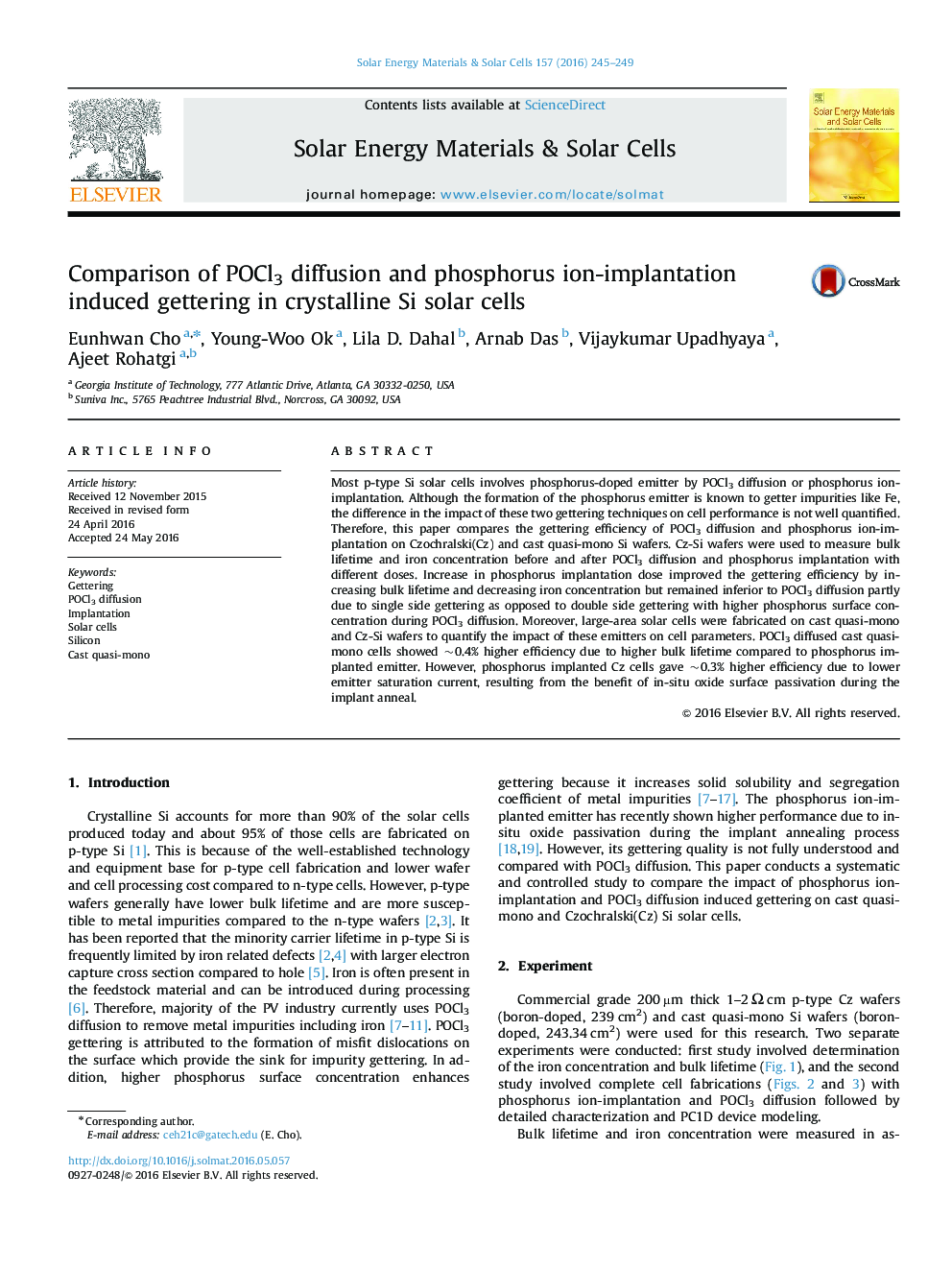| Article ID | Journal | Published Year | Pages | File Type |
|---|---|---|---|---|
| 6534572 | Solar Energy Materials and Solar Cells | 2016 | 5 Pages |
Abstract
Most p-type Si solar cells involves phosphorus-doped emitter by POCl3 diffusion or phosphorus ion-implantation. Although the formation of the phosphorus emitter is known to getter impurities like Fe, the difference in the impact of these two gettering techniques on cell performance is not well quantified. Therefore, this paper compares the gettering efficiency of POCl3 diffusion and phosphorus ion-implantation on Czochralski(Cz) and cast quasi-mono Si wafers. Cz-Si wafers were used to measure bulk lifetime and iron concentration before and after POCl3 diffusion and phosphorus implantation with different doses. Increase in phosphorus implantation dose improved the gettering efficiency by increasing bulk lifetime and decreasing iron concentration but remained inferior to POCl3 diffusion partly due to single side gettering as opposed to double side gettering with higher phosphorus surface concentration during POCl3 diffusion. Moreover, large-area solar cells were fabricated on cast quasi-mono and Cz-Si wafers to quantify the impact of these emitters on cell parameters. POCl3 diffused cast quasi-mono cells showed ~0.4% higher efficiency due to higher bulk lifetime compared to phosphorus implanted emitter. However, phosphorus implanted Cz cells gave ~0.3% higher efficiency due to lower emitter saturation current, resulting from the benefit of in-situ oxide surface passivation during the implant anneal.
Related Topics
Physical Sciences and Engineering
Chemical Engineering
Catalysis
Authors
Eunhwan Cho, Young-Woo Ok, Lila D. Dahal, Arnab Das, Vijaykumar Upadhyaya, Ajeet Rohatgi,
